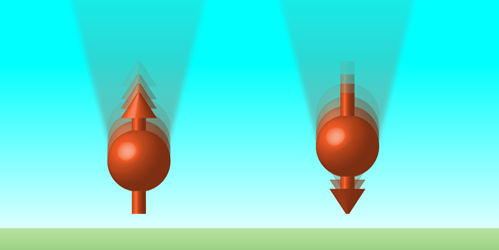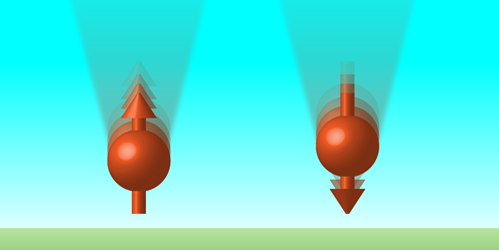Skydiving Spins
It’s textbook physics: Let go of two objects of different mass in the absence of friction forces, and the objects fall at the same rate. This concept, known as universality of free fall, has been verified in a variety of methods and systems. Zhong-Kun Hu, from Huazhong University of Science and Technology in China, and co-workers have tested the principle with rubidium atoms of opposite spin orientation. They found that spin orientation doesn’t matter—the atoms still fall at the same rate.
Testing the universality of free fall isn’t just a fun exercise. Almost all quantum theories of gravity, which attempt to describe gravity using quantum mechanics, predict the violation of the principle, with free-fall acceleration depending on a quantum particle’s properties, such as its spin. Studies with quantum particles could provide a means to constrain these theories.
Hu and colleagues used atom interferometry to measure the free-fall acceleration of rubidium-87 atoms. In this technique, atomic beams are split and then recombined to produce an interference signal from which the atoms’ gravitational acceleration can be deduced. The team showed that the free-fall acceleration of rubidium-87 atoms of opposite spin is the same to within 1 part in 10 million. The study comes on the heels of other atom interferometry experiments that verified universality of free fall for different atomic species and isotopes to a similar level of precision.
This research is published in Physical Review Letters.
–Ana Lopes
Ana Lopes is a Senior Editor of Physics.





